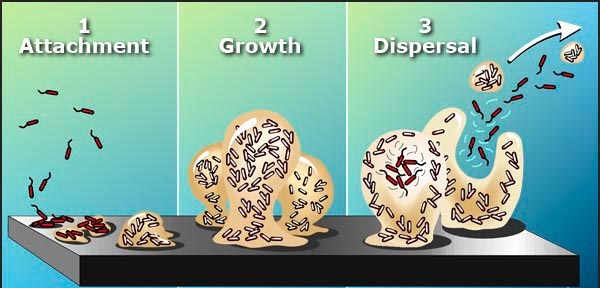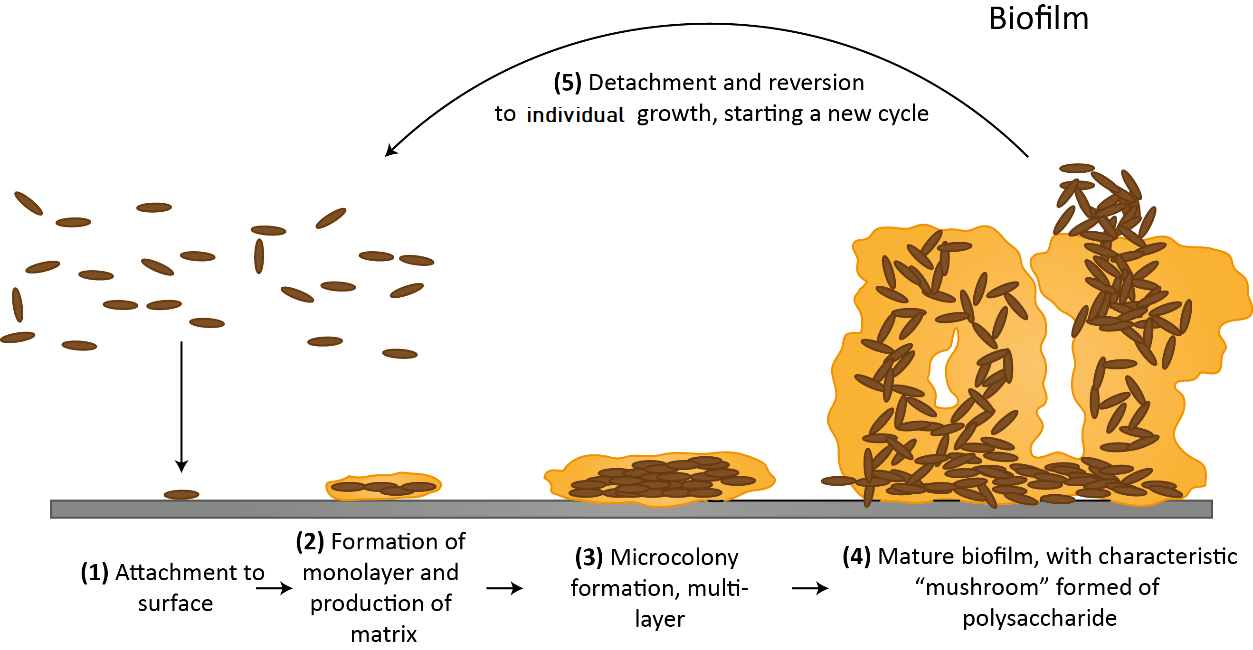
What is a biofilm?
- A biofilm is an aggregate of interactive bacteria attached to a solid surface or to each other and encased in an exo-polysaccharide matrix.
- This is distinct from planktonic or free-living bacterial growth, in which interactions of the microorganisms do no occur.
- Biofilms form a slimy coat on solid surfaces and occur throughout nature.
- A single species of bacteria may be involved, or more than one species may coaggregate to form a biofilm.
- Fungi, including yeasts are occasionally involved in biofilm formation.
- Biofilms are important in pathogenic bacteria which cause human infections that are persistent and difficult to treat.
- For example, bacteria like Staphylococcus epidermidis and Staphylococcus aureus causing infections of central venous cathetars, eye infections involving contact lenses and intraocular lenses, dental plaque produce biofilms. Similarly, Pseudomonas aeruginosa airway infections in cystic fibrosis patients also involve the formation of biofilms.
Formation of biofilm:
- The initial step in biofilm formation is colonization of the surface by bacteria.
- Bacteria may use flagella to move on a surface and initiate colonization.
- Some bacteria may use pili to pull themselves together into clumps while others rely on cell division to initiate colony formation.
- Bacteria continuously secrete low levels of molecules called quorum-sensing signals (e.g. acylhomoserine lactone signals).
- As the number of bacteria increases, the concentrations of these signals increase and when a threshold is reached, the bacteria respond and change their behavior by changing activation of genes.
- May genes may be involved, and this varies from one species of bacteria to another.
- After the activation of genes, the extra-cellular polysaccharide is produced. aeruginosa produces alginate, an extra-cellular polysaccharide present in its biofilm.
- The activation of some genes at this stage may influence metabolic pathways and the production of virulence factors required by the bacterial species.
- Bacteria present deep within the matrix or biofilm tend to have decreased metabolism.
Importance/Role of biofilm:
- Protection: The bacteria in the exo-polysaccharide matrix may be protected from the host’s immune mechanisms and also from the deteriorating environmental stress factors such as UV radiation, pH changes, osmotic stress, and desiccation .
- A physical barrier: Biofilm acts as a physical barrier against the diffusion of antibiotics, defense substances, or other important compounds from the host.
- Resistance to antimicrobials: Some of the bacteria within the biofilm show marked resistance to antimicrobials in contrast to the same strain of bacteria grown free-living in broth. This is because biofilm-forming bacteria can undergo physiological changes such as slow growth rate and produce persistent cells which cannot be inhibited, killed, or eradicated by antibiotics. This helps to explain why it is so difficult to treat infections associated with biofilms forming bacteria.
